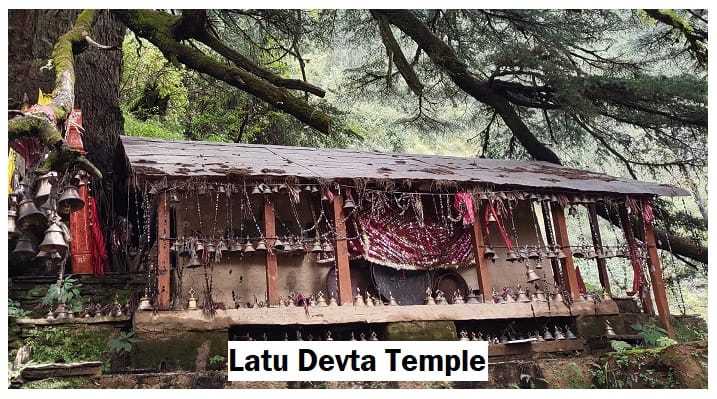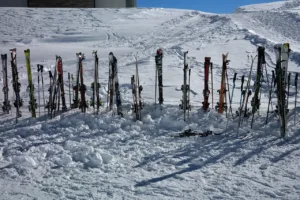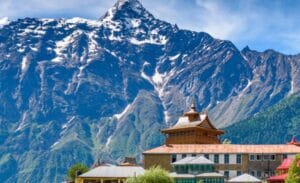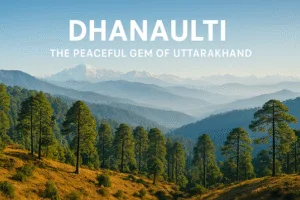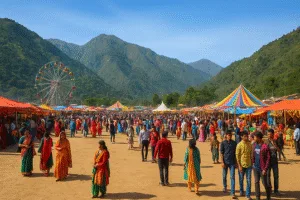Why Wan and Latu Devta Matter in Nanda Devi Raj Jat
Wan is not just another village on the map. It is the guardian’s gate. During the sacred Nanda Devi Raj Jat—held every 12 years—Wan becomes a spiritual checkpoint. Pilgrims begin the final leg here. Latu Devta stands as Dharam-Bhai (brother), the final guardian before the journey into Bugyals and Homkund. Without his blessing, tradition says the yatra cannot continue. This deep bond builds the emotional heart of the pilgrimage.
I have written more on the Raj Jat in my guide: Maa Nanda Devi Raj Jat Yatra 2026 – a sacred Himalayan pilgrimage. It explains its meaning, route, rituals, and why Wan is key. Also, you may enjoy reading Triyugi Narayan Temple – the eternal wedding place of Lord Shiva-Parvati to sense how temples and stories weave across Uttarakhand’s hills.
Adding Local Flavour: The Story of Jeetu Bagdwal
Wan, Chamoli, and many Himalayan villages carry rich folk tales. One such tale is about Jeetu Bagdwal, a local folk legend of courage and devotion. His story lives in songs and fairs. You can read about him in my post: Story of Jeetu Bagdwal – a folk legend of Uttarakhand. This gives you a glimpse of how living stories shape the culture here.
Info Table
| Topic | Brief Insight |
|---|
| Stay & Food | GMVN dorm, Forest Rest House, homestays, fresh garhwali meals, camping |
| Facilities | Basic kitchen, local shops few, carry snacks ahead, good network in Lohajung |
| Temple Etiquette | Dress softly, keep silence, no inside access, no drones, carry tiffin |
| Importance in Raj Jat | Final spiritual gate before high meadows, Devta guards the path |
| Cultural Layer – Jeetu Bagdwal | Adds folk-heritage richness to Wan’s identity |
Stay, Food, and Facilities
Wan is a quiet Himalayan village at about 2,400 m in Chamoli. It has limited but cosy stays for trekkers. There is a GMVN Tourist Rest House with a 12-bed dormitory and basic hot-water kitchen food. You will also find a Forest Rest House nearby. Some local homestays welcome guests with local warmth. Otherwise, camping under the sky is beautiful and free. You can feel stars twinkle over you, as deodars whisper above.
Food is simple and fresh. Local cooks serve dal, bhaat, seasonal saag, garhwali dishes like kafuli or phanu. Dhabas or homestays cook fresh meals. After a long trek, a plate of dal-bhaat feels like home. Shops are few. So carry some snacks and essentials from Lohajung, especially in lean seasons.
Temple Etiquette & Local Rules
When you visit Latu Devta Temple, follow simple but important codes:
Dress modestly. If elders ask, cover head or mouth with a scarf or gamcha.
Keep silence near the inner sanctum. Don’t cross ropes or try to peep inside.
Only the priest enters once a year. Devotees stand outside respectfully.
Do not use drones or loudspeakers. They break the peace.
Leave footwear where locals ask. Many homes use chauk (courtyard), and they guide well.
Carry your own steel bottle and tiffin. Avoid plastic. Locals will happily refill.
Do not pluck flowers or litter. Keep plastic back with you.
This protects the sanctity of the shrine and the fragile environment.
You can also explore more on Himalayan treks like Darma Valley, Adi Kailash, and others on my website mohitbangari.com, where I share full guides, routes, permit tips and cultural info.
Do you know about Ramman festival of Salud-Dungra village? It’s one of the intangible world cultural heritage of India in UNESCO. You can read a detailed article on this topic here.



